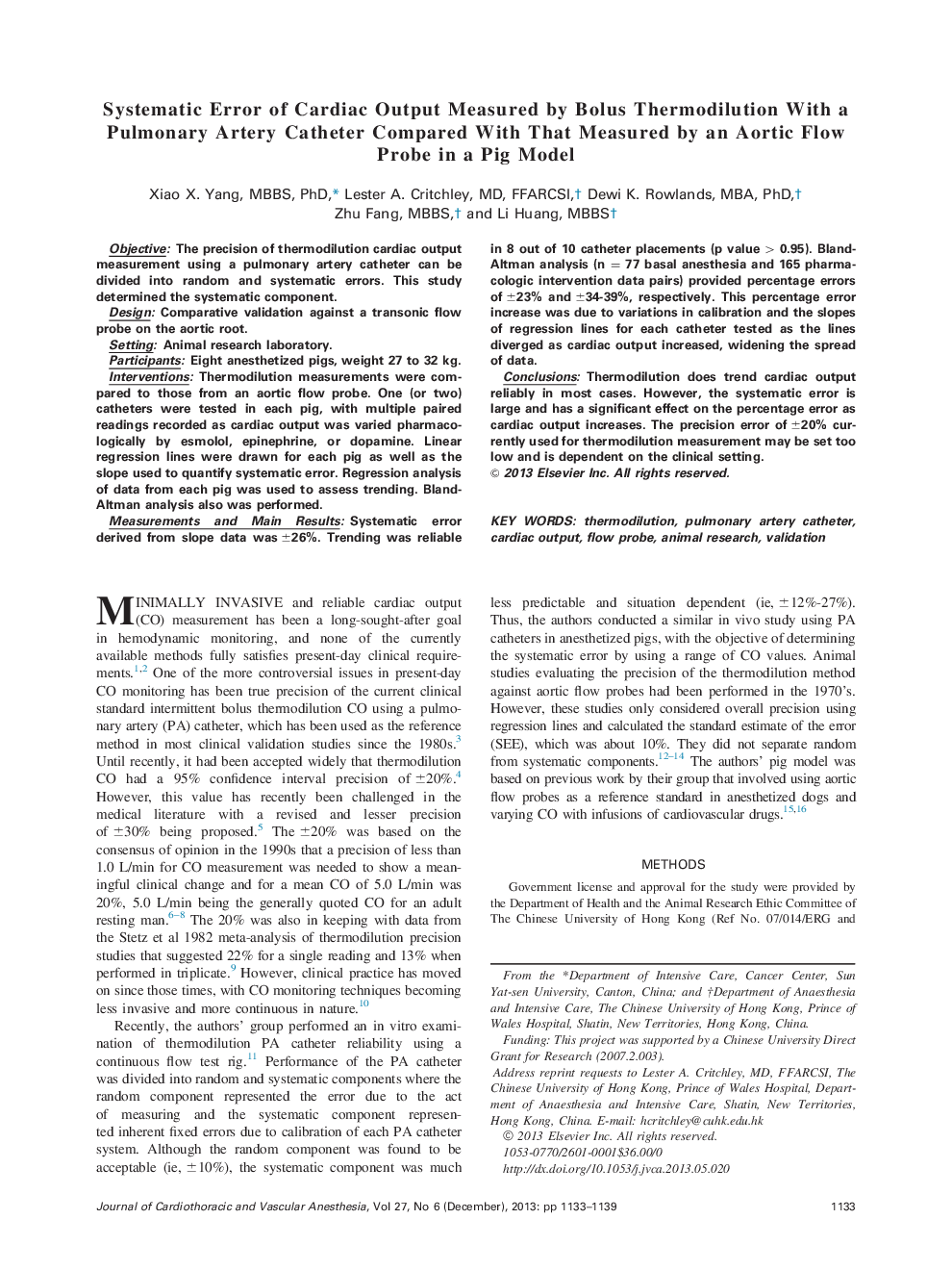| Article ID | Journal | Published Year | Pages | File Type |
|---|---|---|---|---|
| 2759537 | Journal of Cardiothoracic and Vascular Anesthesia | 2013 | 7 Pages |
ObjectiveThe precision of thermodilution cardiac output measurement using a pulmonary artery catheter can be divided into random and systematic errors. This study determined the systematic component.DesignComparative validation against a transonic flow probe on the aortic root.SettingAnimal research laboratory.ParticipantsEight anesthetized pigs, weight 27 to 32 kg.InterventionsThermodilution measurements were compared to those from an aortic flow probe. One (or two) catheters were tested in each pig, with multiple paired readings recorded as cardiac output was varied pharmacologically by esmolol, epinephrine, or dopamine. Linear regression lines were drawn for each pig as well as the slope used to quantify systematic error. Regression analysis of data from each pig was used to assess trending. Bland-Altman analysis also was performed.Measurements and Main ResultsSystematic error derived from slope data was±26%. Trending was reliable in 8 out of 10 catheter placements (p value>0.95). Bland- Altman analysis (n = 77 basal anesthesia and 165 pharmacologic intervention data pairs) provided percentage errors of±23% and±34-39%, respectively. This percentage error increase was due to variations in calibration and the slopes of regression lines for each catheter tested as the lines diverged as cardiac output increased, widening the spread of data.ConclusionsThermodilution does trend cardiac output reliably in most cases. However, the systematic error is large and has a significant effect on the percentage error as cardiac output increases. The precision error of±20% currently used for thermodilution measurement may be set too low and is dependent on the clinical setting.
